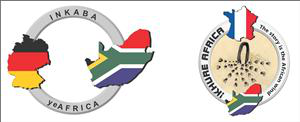Speaker
Mr
Lucian Bezuidenhout
(Nelson Mandela Metropolitan University)
Description
The increased interest in the potential shale gas extraction within the Karoo basin is raising concerns regarding the potential impact it may have on this fragile environment. In order to be in the possible position to moderate any negative effects associated with possible hydraulic fracturing, a scientifically thorough base-line of this region will need to be obtained. Since our current geophysical knowledge of this complex region is incomplete, we have set out to survey the sub-surface geology, as well as determine the intrinsic seismic activity using ambient passive seismic measurements.
In this study, passive seismic network of 20 three-component (N-S, E-W, vertical) geophones will be deployed for predetermined periods in various areas of interest in the Karoo. Ambient seismic signals up to frequencies of 160 Hz can be monitored. The data acquired from the three component seismic sensors results in a time signal that needs to be converted to a velocity signal. The highly non-linear inverse problem created from the retrieval of the velocity variation of the travel times is numerically solved using Green’s cross correlation function to construct the 3-D map. Thus, passive seismic velocity inversion tomography is a technique that uses group velocities, derived from continuous ambient noise propagating through the Earth’s crust to construct 3-D imagery of its sub-surface.
This technique allows for easy deployment of seismic stations, requires no induced source, can reach highly sensitive areas, is environmentally friendly and is more cost effective compared to active seismic techniques. It is envisaged that the use of the ambient noise passive seismic survey in the Karoo basin can aid in gaining better understanding of the sub-surface geology and to complement other techniques in determining the locations of potential gas bearing formations.
Keywords: Seismic, 3-D construction, velocity
Primary author
Mr
Lucian Bezuidenhout
(Nelson Mandela Metropolitan University)
Co-authors
Prof.
Moctar DOUCOURE
(AEON - NMMU)
Dr
Viera Wagener
(Nelson Mandela Metropolitan University)

